
Rediscovering Japan

Rediscovering Japan
Seasonal Events (July)

by tomizuta
Broiled Eels
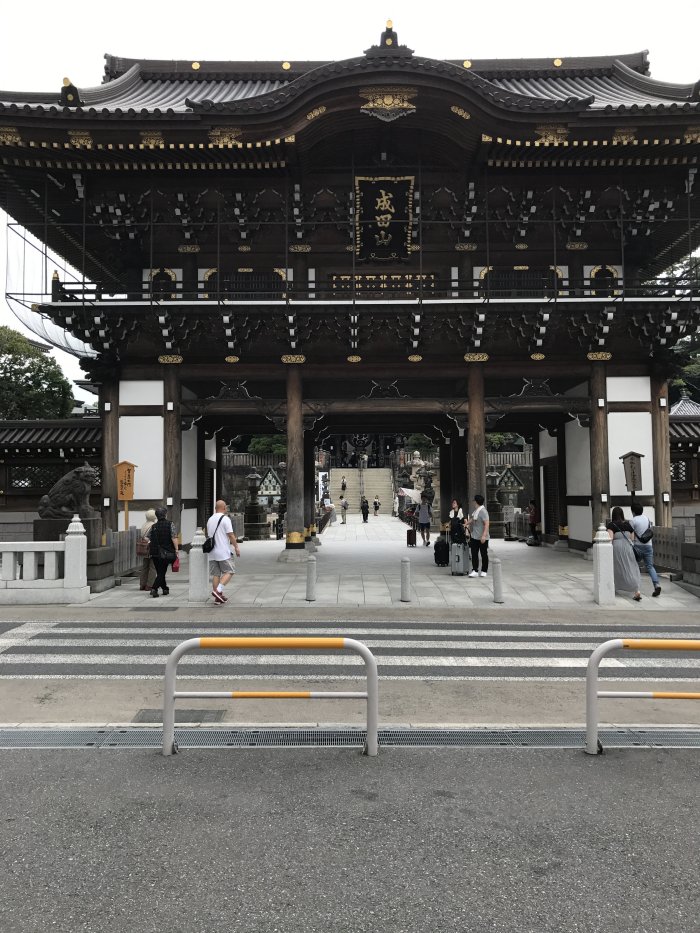 Japan imported from China the allocation system of days in a calendar before
the import of the Gregorian calendar. Each day was a combination of ten
elements and twelve animals. The elements were the older and younger brothers
of five elements, wood (from Jupiter), fire (Mars), earth (Saturn), gold
(Venus) and water (Mercury). The twelve animals are cat, ox, tiger, rabbit,
dragon, snake, horse, sheep, monkey, bird, dog and boar, believed to be
the animals that rushed to Buddhafs deathbed in that order. So every twelve
days, there is a day of the ox and so on.
Japan imported from China the allocation system of days in a calendar before
the import of the Gregorian calendar. Each day was a combination of ten
elements and twelve animals. The elements were the older and younger brothers
of five elements, wood (from Jupiter), fire (Mars), earth (Saturn), gold
(Venus) and water (Mercury). The twelve animals are cat, ox, tiger, rabbit,
dragon, snake, horse, sheep, monkey, bird, dog and boar, believed to be
the animals that rushed to Buddhafs deathbed in that order. So every twelve
days, there is a day of the ox and so on.
(Left: The grand entrance gate of Shinshouji Temple close to Narita Airport.
The sandou I will be introducing below starts on the left.)
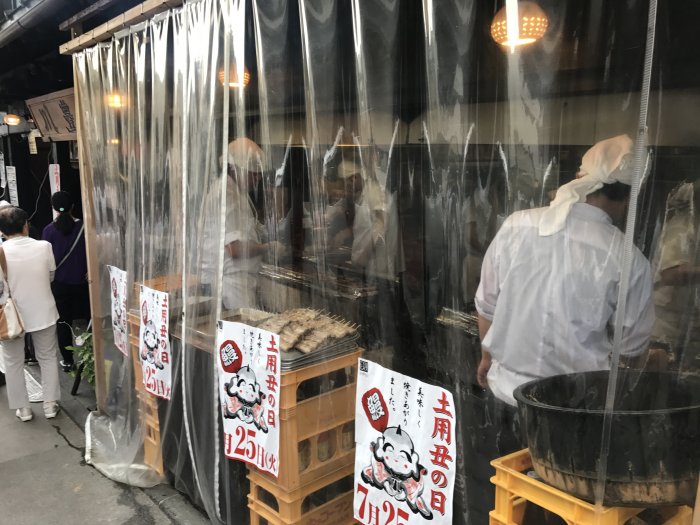 The annual calendar was also divided into the four seasons of winter, spring, summer and autumn, and the eighteen days of the beginning of the season was called doyou, but eventually came to be understood by people as the eighteen days preceding summer. The eighteen days will of course contain one day of the ox, which is ox day within doyou.
The annual calendar was also divided into the four seasons of winter, spring, summer and autumn, and the eighteen days of the beginning of the season was called doyou, but eventually came to be understood by people as the eighteen days preceding summer. The eighteen days will of course contain one day of the ox, which is ox day within doyou.
( Left: There were posters informing you this year's ox day within doyou
fell on July 26th. Cooks grilling the eels as the final preparation.)
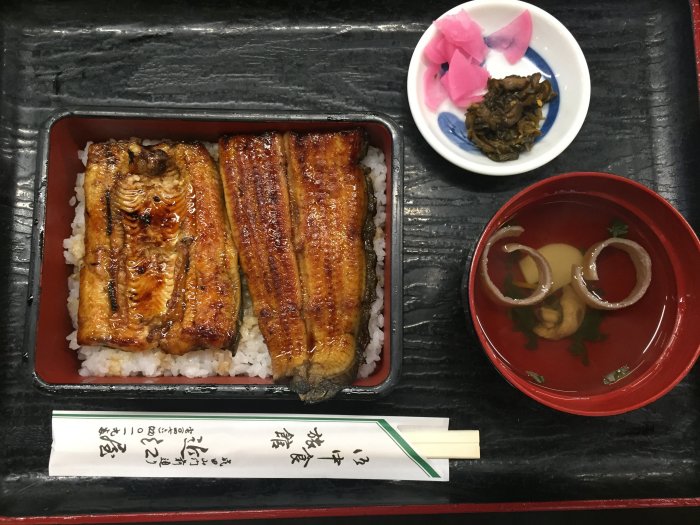 It is customary to have broiled eel on this day. It is said that physician
Gennai Hiraga promoted this idea to provide energy to carry through the
hot summer. What you ought to know is that eels are best eaten in the winter
when they add more fat to their bodies. But Gennaifs advice was given to
an owner of a restaurant complaining that he had very little eel sales
in summer, it is said. Anyway there must have been some wisdom in Gennnaifs
idea, otherwise the custom wouldnft have lasted this long.
It is customary to have broiled eel on this day. It is said that physician
Gennai Hiraga promoted this idea to provide energy to carry through the
hot summer. What you ought to know is that eels are best eaten in the winter
when they add more fat to their bodies. But Gennaifs advice was given to
an owner of a restaurant complaining that he had very little eel sales
in summer, it is said. Anyway there must have been some wisdom in Gennnaifs
idea, otherwise the custom wouldnft have lasted this long.
(Left: Broiled eel on top of rice (unajuu)., with eel liver soup (kimosui))
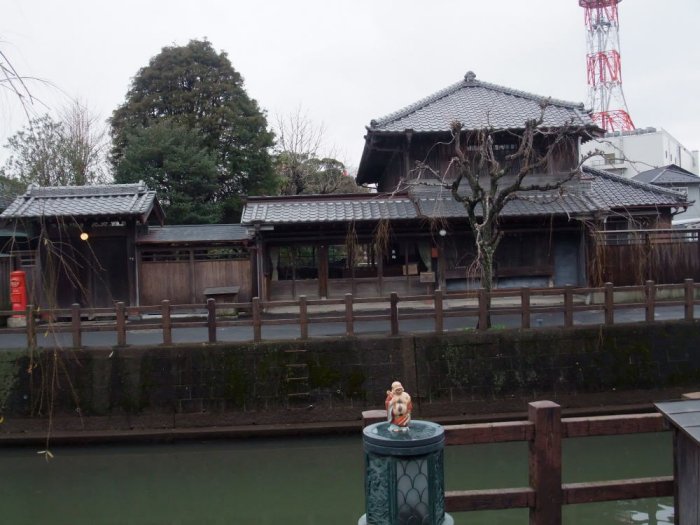 Eels live and feed in fresh water for some years before they migrate to
spawn. Eel population has greatly declined in recent years, due to habitat
loss in lakes and rivers together with overfishing of glass or child eels
for farming, and is regarded as an endangered species. Concentrated studies
to understand the life cycle of eels better are ongoing and their spawning
area in the Pacific Ocean has been identified. I am hopeful that these
studies together with farming and breeding will help us overcome this problem.
Eels live and feed in fresh water for some years before they migrate to
spawn. Eel population has greatly declined in recent years, due to habitat
loss in lakes and rivers together with overfishing of glass or child eels
for farming, and is regarded as an endangered species. Concentrated studies
to understand the life cycle of eels better are ongoing and their spawning
area in the Pacific Ocean has been identified. I am hopeful that these
studies together with farming and breeding will help us overcome this problem.
(Left: River flowing through Sawara close to Narita. Modernization has
caused the loss of eel habitats)
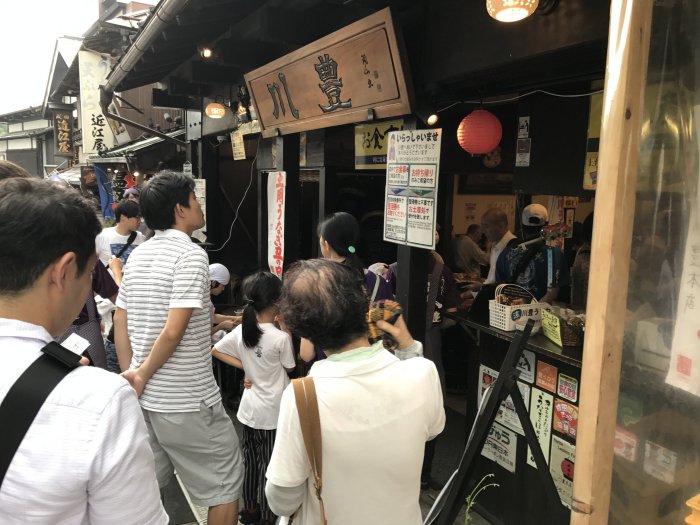 Wild eel has become so scarce as well as expensive to enjoy at eel restaurants.
Almost all eels consumed are farmed or imported from neighboring countries.
A domestically farmed broiled eel on top of a rice bed (una-juu) would
cost anything between two thousand to four thousand yen, perhaps three
times or more of a standard meal.
Wild eel has become so scarce as well as expensive to enjoy at eel restaurants.
Almost all eels consumed are farmed or imported from neighboring countries.
A domestically farmed broiled eel on top of a rice bed (una-juu) would
cost anything between two thousand to four thousand yen, perhaps three
times or more of a standard meal.
(Left: Queue of people waiting for a table at an eel restaurant. Expensive
as it may be it is still a must have in Summer.)
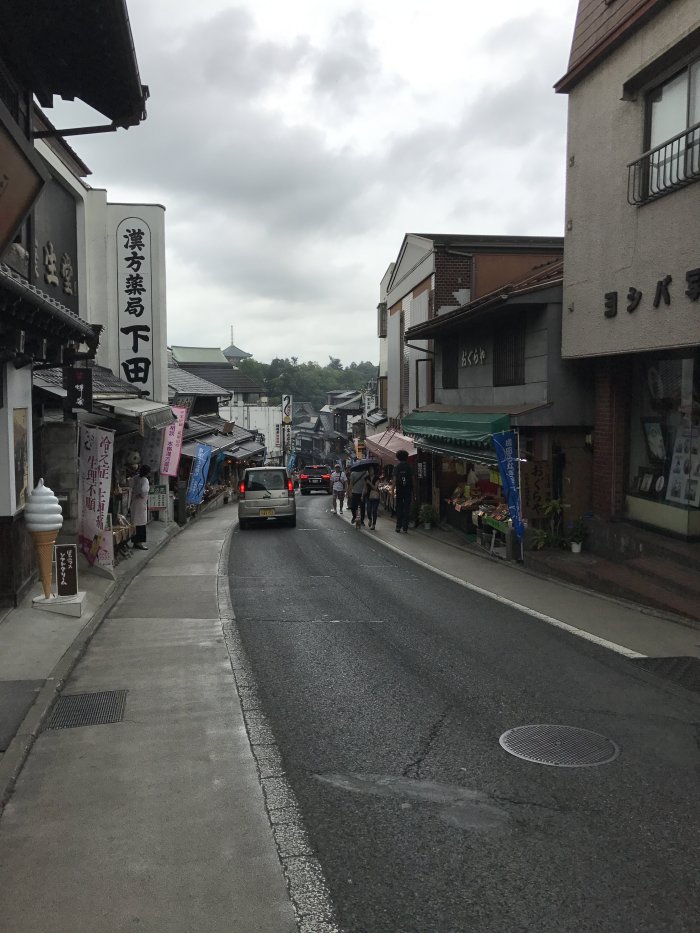 In wild life, the eels live in fresh water, so you can find many good eel restaurants, by the lakes, rivers and swamps. In late July, 2017, we visited the sandou (path to the main temple) of Shinshouji Temple in Narita, just a couple of miles from the airport. Although I have enjoyed broiled eels in many lake or riversides of Japan, I had not noticed that this sandou in Narita boasted the largest concentration of eel restaurants in Japan. This, I learnt is due to its close location to the water areas of Kasumigaura (Japanfs second largest lake) and River Tone (Japanfs second longest river).
In wild life, the eels live in fresh water, so you can find many good eel restaurants, by the lakes, rivers and swamps. In late July, 2017, we visited the sandou (path to the main temple) of Shinshouji Temple in Narita, just a couple of miles from the airport. Although I have enjoyed broiled eels in many lake or riversides of Japan, I had not noticed that this sandou in Narita boasted the largest concentration of eel restaurants in Japan. This, I learnt is due to its close location to the water areas of Kasumigaura (Japanfs second largest lake) and River Tone (Japanfs second longest river).
(Left: View from the top of the sandou walking from Narita JR Station.
The high pagoda of Shinshouji Temple in the distant back. The eel restaurants
are concentrated in the area where you see the two cars.)
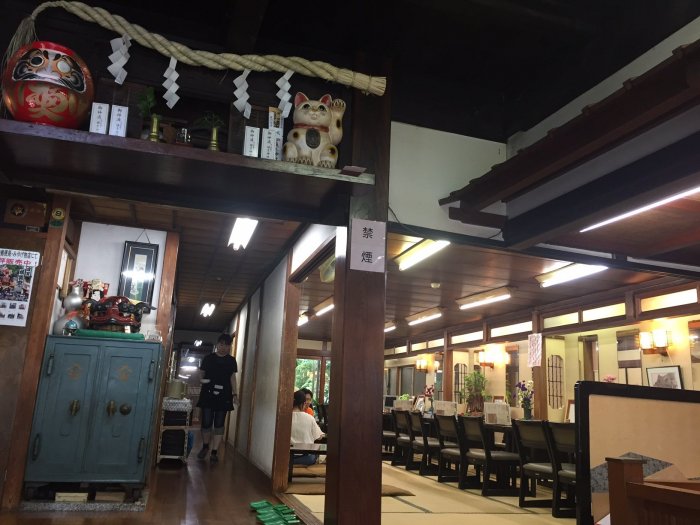 There are many restaurants that have been here hundreds of years. We went
to one such restaurant. We asked if they had parking, to which the lady
ushering in guests answered yes and actually got in my car to guide us
to their car park a short walk away. I was very pleased with their hospitality.
Eel restaurants open as early as from 10 am. We arrived shortly after 11am,
and were offered a nice table not too close to the air conditioner. By
the time we were served our broiled eels, the large restaurant was fully
occupied.
There are many restaurants that have been here hundreds of years. We went
to one such restaurant. We asked if they had parking, to which the lady
ushering in guests answered yes and actually got in my car to guide us
to their car park a short walk away. I was very pleased with their hospitality.
Eel restaurants open as early as from 10 am. We arrived shortly after 11am,
and were offered a nice table not too close to the air conditioner. By
the time we were served our broiled eels, the large restaurant was fully
occupied.
(Left: Inside the eel restaurant. Dining area on the right)